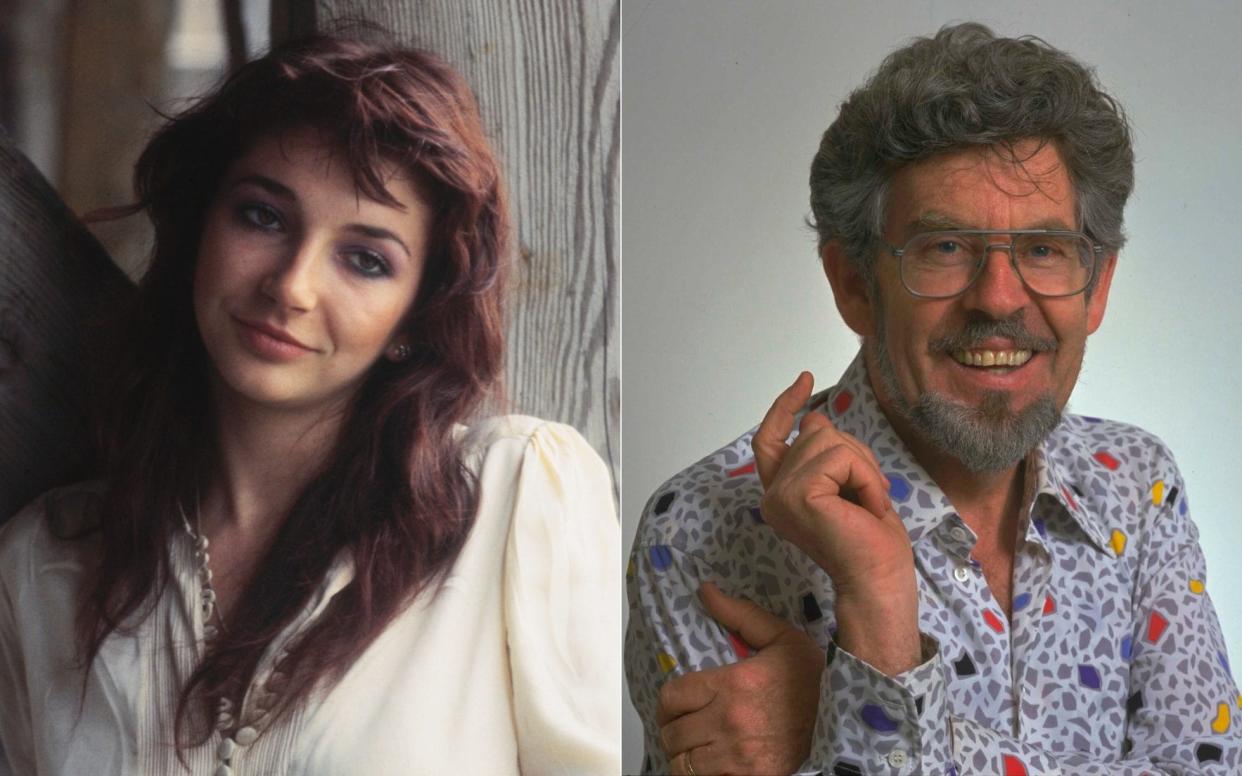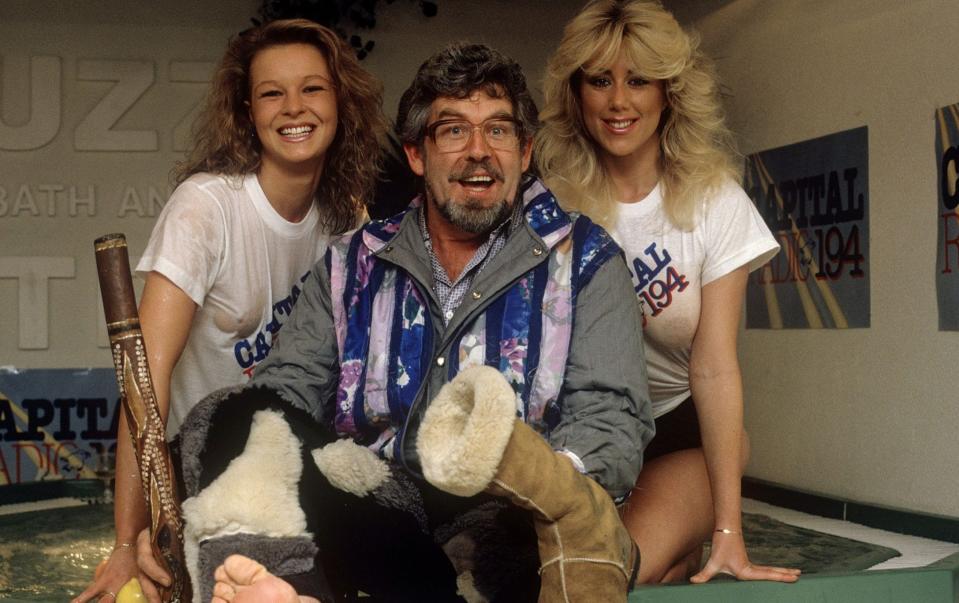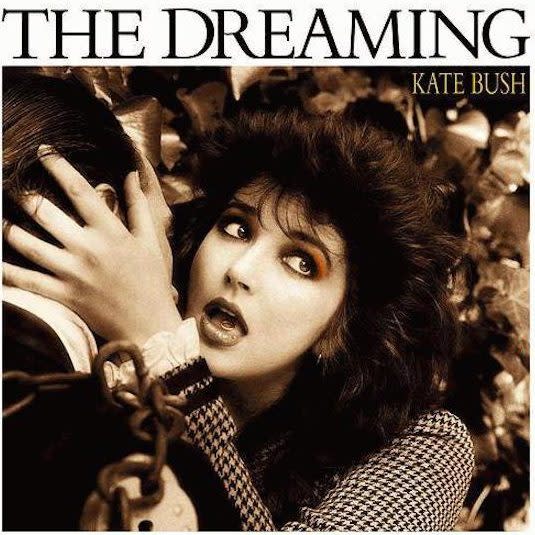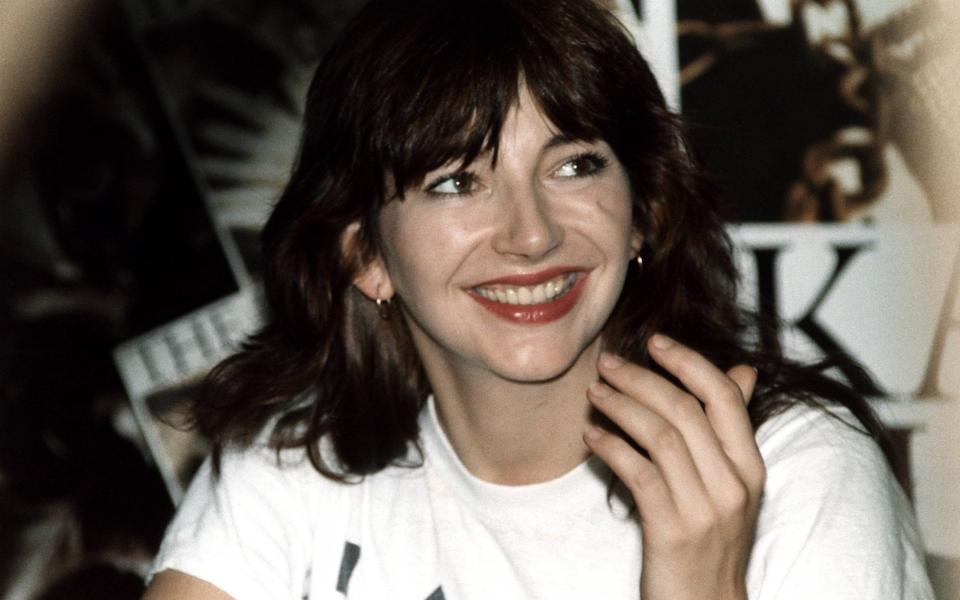The Rolf Harris collaborations Kate Bush would rather forget

Disgraced entertainer Rolf Harris, who has died aged 93, was famous for his UK top 10 hits such as Tie Me Kangaroo Down, Sport and Two Little Boys. What is less well known is that Harris was an on-off collaborator with Kate Bush. The pairing of the Australian TV presenter and artist with the queen of inventive and off-kilter pop may seem incongruous, to say the least.
But Harris featured on three of Bush’s tracks over the decades before allegations of his behaviour came to light, while she appeared on an unreleased song of his. It speaks volumes about Harris’s fall from grace that Bush quietly re-recorded two of her songs following his 2014 conviction for indecent assault.
Harris first appeared on the title track of Bush’s 1982 album The Dreaming. The song, about the destruction of Aboriginal Australians’ land, featured Harris on didgeridoo. It was a frenetically hypnotic song that also featured sheep and bird sounds from famed animal impersonator Percy Edwards (as well as a Cockney-Aussie hybrid accent from Bush that modulated in volume, and a cornucopia of other strange sounds, rhythms and textures). The Dreaming was released as a single and reached number 48 in the charts.
Following Bush’s performance of the track on BBC music programme The Old Grey Whistle Test, co-presenter David Hepworth echoed the thoughts of viewers when he brought up Harris’s involvement.
“There’s one very famous Australian featured on this album who you’re not used to finding on rock records: er, Rolf Harris. This is correct, is it?” Hepworth said. Amused, Bush replied that people’s reactions to Harris’s involvement were always interesting. “He’s not often mentioned on this programme,” chipped in Hepworth’s co-presenter Mark Ellen. Bush replied: “He is a very good didgeridoo player, which is why we used him.”
It is not known how Bush and Harris met. But it was clearly a relationship that endured. Harris later appeared on two tracks on Bush’s 2005 comeback album Aerial, which was her first release since 1993’s The Red Shoes. After a 12-year hiatus (in which Bush became a mother to her son Bertie), anticipation for the album among fans and critics alike was at fever pitch.
The double album was among Bush’s most experimental yet (and to my mind it’s one of her best). Relatively low key, Aerial dealt with domesticity and life’s minutiae, even featuring a song in which Bush recited the numbers of pi. The record’s entire second half was a song cycle called An Endless Sky of Honey, which comprised nine musical segments blending into each other. It was here where Harris appeared.
An Endless Sky of Honey tracks time passing over the course of a single day. It starts meditatively – featuring birdsong – and slowly builds with flamenco guitar and percussion entering the mix. The suite closes 42 minutes later as a lush Balearic-style banger. Harris’s first appearance is on a segment called An Architect’s Dream.

Playing the role of an artist, his unmistakeable voice is heard whispering about a painting that he’s working on. “I need to get that tone a little bit lighter, maybe with some dark accents coming in from this side,” Harris says. In the following segment, The Painter’s Link, Harris sings over piano and washes of strings. “It’s raining/ What has become of my painting?/ All the colours are running…” he croons in a plaintive voice. (In reply, Bush sings that the running paints look a bit like a sky of honey, among other things).
Critics were wryly amused at Harris’s involvement. The casting demonstrated Bush’s “admirable disregard for accepted notions of cool,” wrote one reviewer, adding – however – that “you keep expecting him to ask if you can guess what it is yet”, in reference to the Australian’s catchphrase. Other critics wrote that the album was a marvellous and complex work “despite” – rather than because of – Harris’s “muttered commentary”.
After Harris’s numerous appearances on Bush’s albums, she seemed to reciprocate a few years later. Harris told Metro newspaper in 2010 that the pair had done another recording together. It was a version of Irish folk song She Moves Through The Fair, with Harris on lead vocals and Bush singing the song’s female part.

“I did her a favour by playing on her album and she did me a favour by recording with me,” Harris was quoted as saying in Metro. “It’s bloody marvellous, the best thing I’ve done. I’m sure Kate Bush fans will be interested. I’m not sure how to release it. I’m no au fait with downloading.”
It is thought that the song was recorded in 2009 – but it never saw the light of day. A leaked version appears to exist on YouTube, notable for Harris’s Irish-inflected, slightly-electronically-modified vocals and its trancey backbeat (as well as Bush’s beautifully ghostly sung parts).
Things changed following Harris’s jailing in 2014. When Bush released a remastered version of Aerial four years later, the Australian’s contributions had been removed and re-recorded. “Following his 2014 conviction for indecent assault, [Harris’s] part was re-recorded, without any explanation necessary, by Bertie McIntosh for the 2018 remastered release,” writes Tom Doyle in Running Up That Hill: 50 Visions of Kate Bush, his fascinating recent book on the singer.
That’s Bertie, Bush’s son. He also played the role of Painter during Bush’s 2014 residency at London’s Hammersmith Apollo. On the re-recorded Aerial, his contribution is longer than Harris’s original one. His speech on An Architect’s Dream is extended, while The Painter’s Link becomes a full sung duet with his mother (for the 95 seconds that it lasts).
Although both versions of Aerial are available on streaming platforms, it seems that Harris has been at least partially erased from Bush’s work. As Doyle suggests, the reasoning needs no explanation. And there have, of course, been other examples of artists being replaced in projects following controversies or the emergence of allegations.
Actor Kevin Spacey was removed from Ridley Scott’s film All the Money in the World after allegations of sexual misconduct came to light in 2017. His scenes as John Paul Getty were reshot with Christopher Plummer in the role. The difference here, though, is that the changes were made before the film was ever released. (Spacey is due to face trial in the UK next month on numerous charges, which he denies.)

Bush’s decision to retrospectively re-record parts of Aerial sparked a lively debate online, particularly as it appears that a 2018 remaster of The Dreaming retained Harris’s didgeridoo playing. “No one, never mind Kate Bush, knew about Rolf Harris in 2004. You can’t erase OJ Simpson from the Naked Gun films. While I can understand the reasons, I don’t like them,” wrote one observer on pop culture website The Afterword. Another asked whether albums by Frank Zappa’s Mothers of Invention should now be deleted because bass player Roy Estrada is in jail for child abuse. It’s certainly an unsavoury moral dilemma for the industry to grapple with.
Personally, I can completely see why Bush re-recorded the parts. It’s perhaps pushing it to say that they sullied a masterpiece: Harris’s contributions were too fleeting and the album too great for that. In total they last for less than half a minute on an album that’s 80 minutes long. But, however brief Harris’s appearance was, it created an ex post facto association in the listener’s mind that was completely at odds with the beauty and purity of Bush’s vision.
Still, the collaborations between Harris and Bush over the decades speak of one of music’s most unlikely pairings. And, even years later, it will surprise many. To paraphrase what presenter Ellen said of Harris on the Old Grey Whistle Test, “He’s not often mentioned.”


